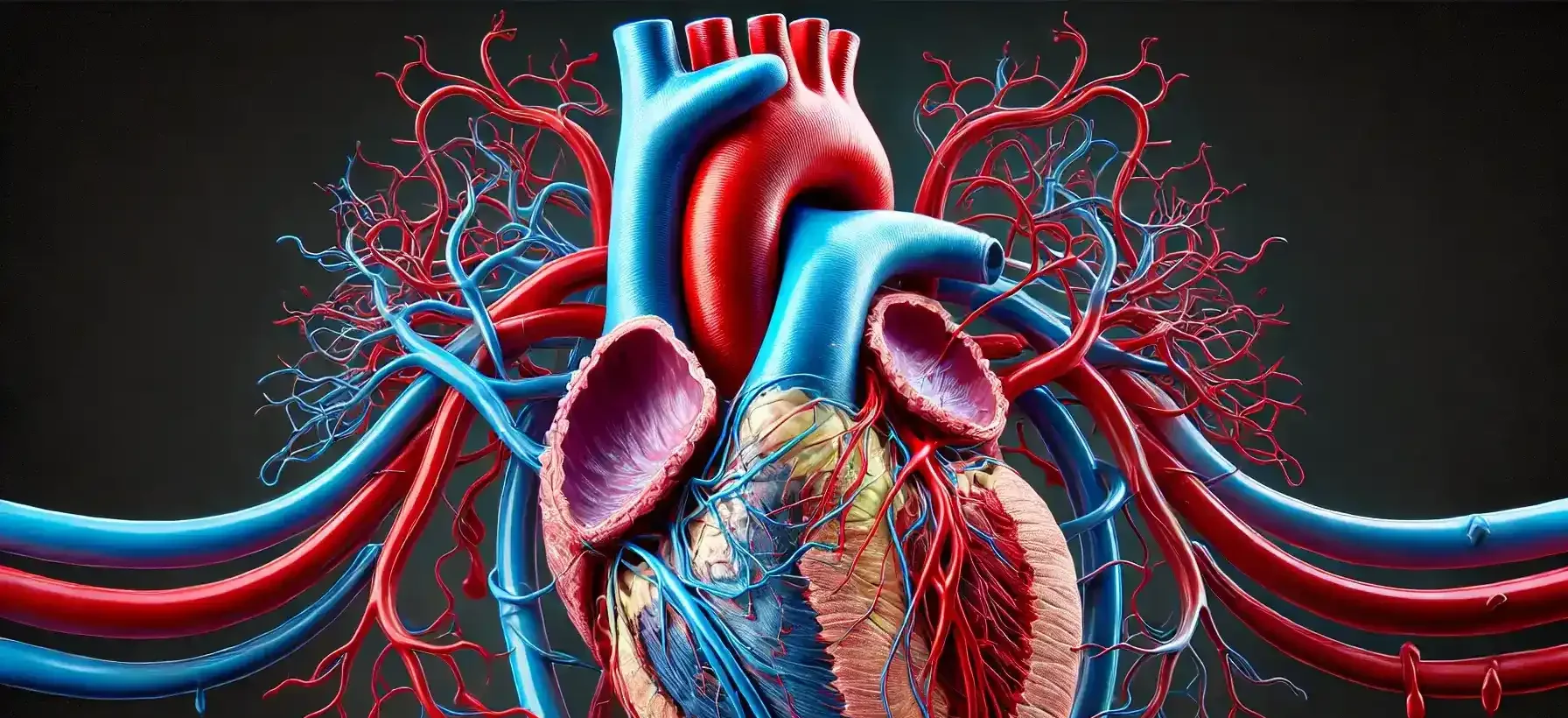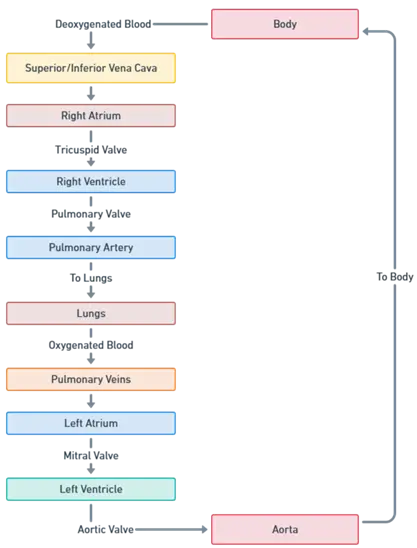Blood circulation through the heart is a continuous process that transports oxygen-rich blood from the lungs to the body and returns oxygen-poor blood back to the heart and lungs.
This process involves the heart’s four chambers and is divided into two main circulatory pathways: pulmonary circulation and systemic circulation.
Advertisements
Step-by-Step Blood Circulation Through Heart:
-
Return to the Heart
- Oxygen-poor blood enters the right atrium via the superior vena cava (upper body) and inferior vena cava (lower body).
-
Right Atrium to Right Ventricle:
- The right atrium contracts, pushing blood through the tricuspid valve into the right ventricle.
-
Right Ventricle to Lungs:
- The right ventricle contracts, sending blood through the pulmonary valve into the pulmonary artery.
- Blood travels to the lungs to receive oxygen and release carbon dioxide.
-
Return to the Heart (Blood Circulation Through Heart):
- Oxygen-rich blood returns to the left atrium via the pulmonary veins.
-
Left Atrium to Left Ventricle:
- The left atrium contracts, pushing blood through the mitral (bicuspid) valve into the left ventricle.
-
Left Ventricle to Body (Blood Circulation Through Heart):
- The left ventricle contracts, sending blood through the aortic valve into the aorta.
- Oxygen-rich blood is distributed to the body’s organs and tissues via arteries, arterioles, and capillaries.
-
Completion of the Circulatory Loop:
- Oxygen-poor blood is collected from tissues through venules and veins, returning to the right atrium, and the cycle repeats.
Advertisements


